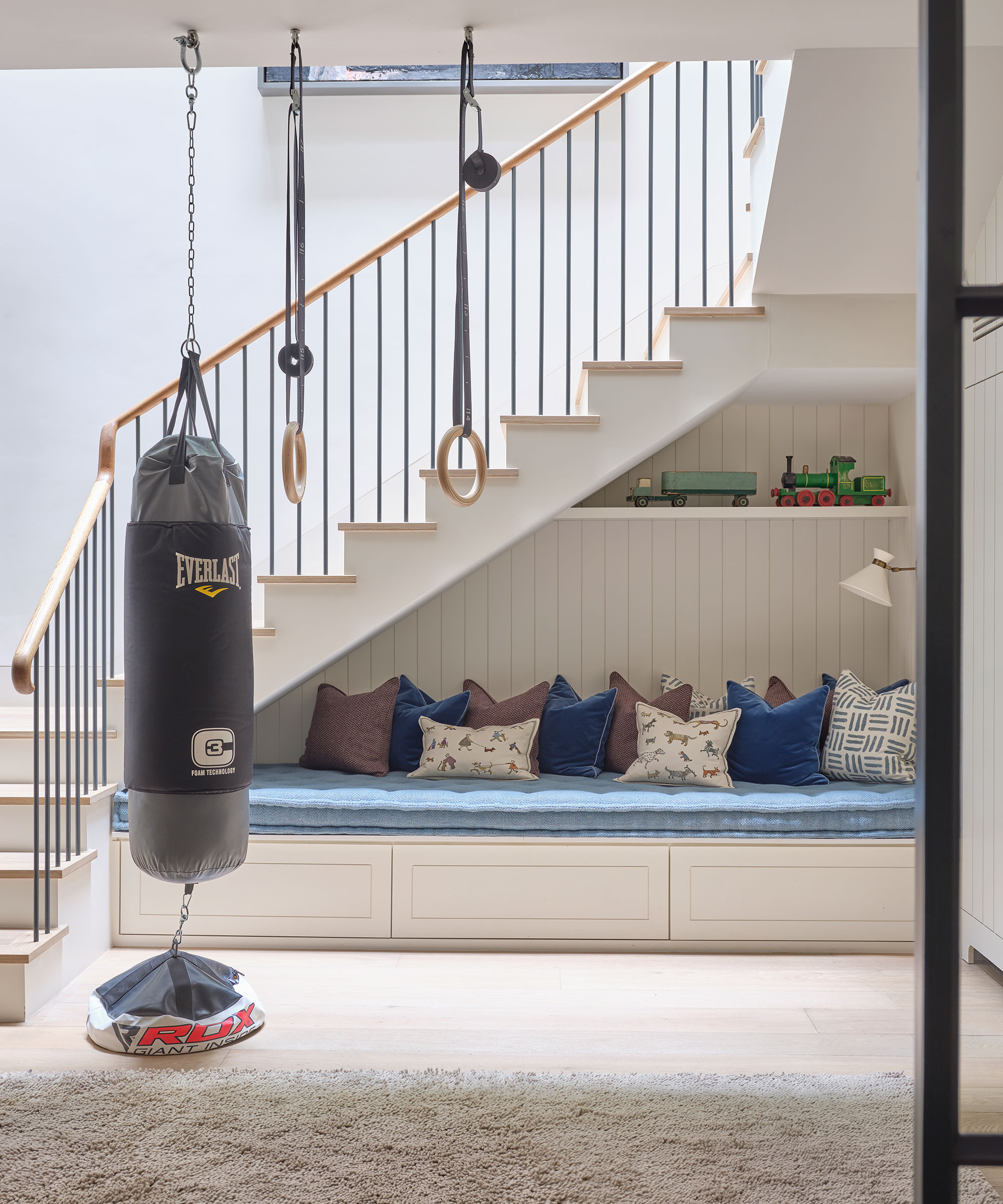
Keeping a home at a comfortable temperature year-round demands a variety of strategies. Good maintenance and sufficient insulation are always on the agenda, but should you insulate a basement ceiling?
Basement insulation is definitely worthwhile, and it’s one of the many eco-home improvements that can add value to your property. According to the US Department of Energy’s Energy Saver program, it can also help you save money on heating and provide a dry, comfortable living space.
However, is the best strategy to insulate basement walls, ceilings, or both? Below, we examine the pros and cons of each option and ask home renovation experts to weigh in on the topic.
Basement ceiling and wall insulation
Why is the question of basement insulation so important? According to the Department of Energy’s Energy Saver program: ‘Basements can account for 10-30% of a home’s total heat loss and provide a significant risk of moisture problems due to extensive cold surfaces at the walls and slab.'
In other words, it’s a project that can bring significant savings on energy bills, as well as reduce your home’s environmental impact.
As for where to insulate, these are the arguments.
Insulating a basement ceiling: pros and cons

The Pros
Basement ceiling insulation can be a boon. ‘In colder climates, it will help with heating and cooling of your home,’ says Docia Boylen, owner of Handyman Connection of Golden.
An additional reason you might not have considered – but which can be a huge benefit depending on basement use – is noise reduction. ‘If you don't want to hear what is going on between floors, insulation is the way to go,’ Docia says.
Be aware that it is not mandatory. ‘Code does not require the basement ceiling to be insulated,’ explains Tony Caciolo, president at Monogram Custom Homes and Pools.
The Cons
There can be some downsides to insulating a basement ceiling. ‘One thing to consider is that when you insulate, your basement ceiling is now completely separated from your house floor, which can be a good heat source,’ explains Docia. ‘This would result in a colder basement that can impact the temperature of your home if cold air from the basement travels through any cracks and holes around your electrical wires and plumbing coming out of the basement.

‘Another downside could be the number of mechanical pipes and wires that are running in the ceiling, which could make the area not recommended for insulation,’ she says.
‘A final reason would be height,’ Docia adds. ‘If you can’t allow the space for insulation and maybe drywall, the area should be left alone. Sometimes basements are not as high as other floors.’
Tony Caciolo identifies possible problems with traditional fiberglass or mineral wool insulation: ‘Basement ceiling insulation is often installed upside down with the paper facing visible,’ he explains. ‘This is a fire hazard, and it is printed on the insulation so that the paper facing cannot be exposed.
‘The correct way is to use unfaced insulation, but herein lies the issue. Small fibers will continue to fall from this open-faced insulation and can make for an “itchy” basement. So customers don’t really like the exposed fiberglass or mineral wool. There are other options, such as spray foam, but the cost is almost impossible to justify since the gain is minimal.’
Note that it’s different if there’s drywall on the ceiling when the insulation will be covered, Tony says.
Insulating basement walls: pros and cons

The Pros
Basement wall insulation can control moisture in this room, which will help get rid of black mold and rot and save energy. If you’re constructing a home, exterior insulation can be used, but interior wall insulation can be added to an existing home.
The Cons
There are a few disadvantages to insulating basement walls on the inside. Interior insulation will slightly reduce the basement’s usable area. It might also need a fire-rated covering, depending on the insulation type, say the experts at Energy Saver.
Bear in mind that correct installation is vital. ‘Insulation on the interior of basement walls must be installed in an airtight manner that keeps airborne vapor from condensing on cold walls,’ states the Department of Energy’s Building America program, which provides research and development to the residential new construction and remodeling industry. ‘At the same time, the material must be a vapor retarder that is semi-permeable so any moisture coming through the wall can dry to the interior.’
Insulating a basement: the verdict

Our experts unanimously agree that you are better off exploring external wall insulation over insulating a basement ceiling:
‘Even in a house with an unconditioned basement, the basement is more connected to other living spaces than to the outside, which makes wall insulation preferable to ceiling insulation,’ concludes The Department of Energy’s Energy Saver Program.
Not only will this help reduce moisture and mold (a common occurrence in home basements), but these smart solutions can potentially reduce your energy bills too.
FAQs
What type of insulation should I use in my basement ceiling?
If you still want to insulate a basement ceiling – perhaps to soundproof the ceiling – then acoustic insulation should be your choice.
‘Acoustic insulation significantly improves the performance of a ceiling against airborne noise, reducing sound,’ says Docia Boylen, owner of Handyman Connection of Golden.
‘Bat/roll insulation is great for a DIY’er,’ she continues. ‘To install this, you need the ceiling to be open and accessible (no drywall), and you also need standard studs and joists in the area to install.
'This type of insulation will likely be available at your local hardware store, and it will come in different R ratings depending on the climate you live in. It comes with and without foil. The foil acts as a vapor or air barrier and is good for basements.’
The most energy efficient homes are insulated from roof to foundation, but there are fixes that can keep a poorly insulated house warm. Use heat-retaining tricks, too, to stay comfortable when its cold. And draft proofing tips can come to the rescue for a more comfortable home environment and lower bills.







